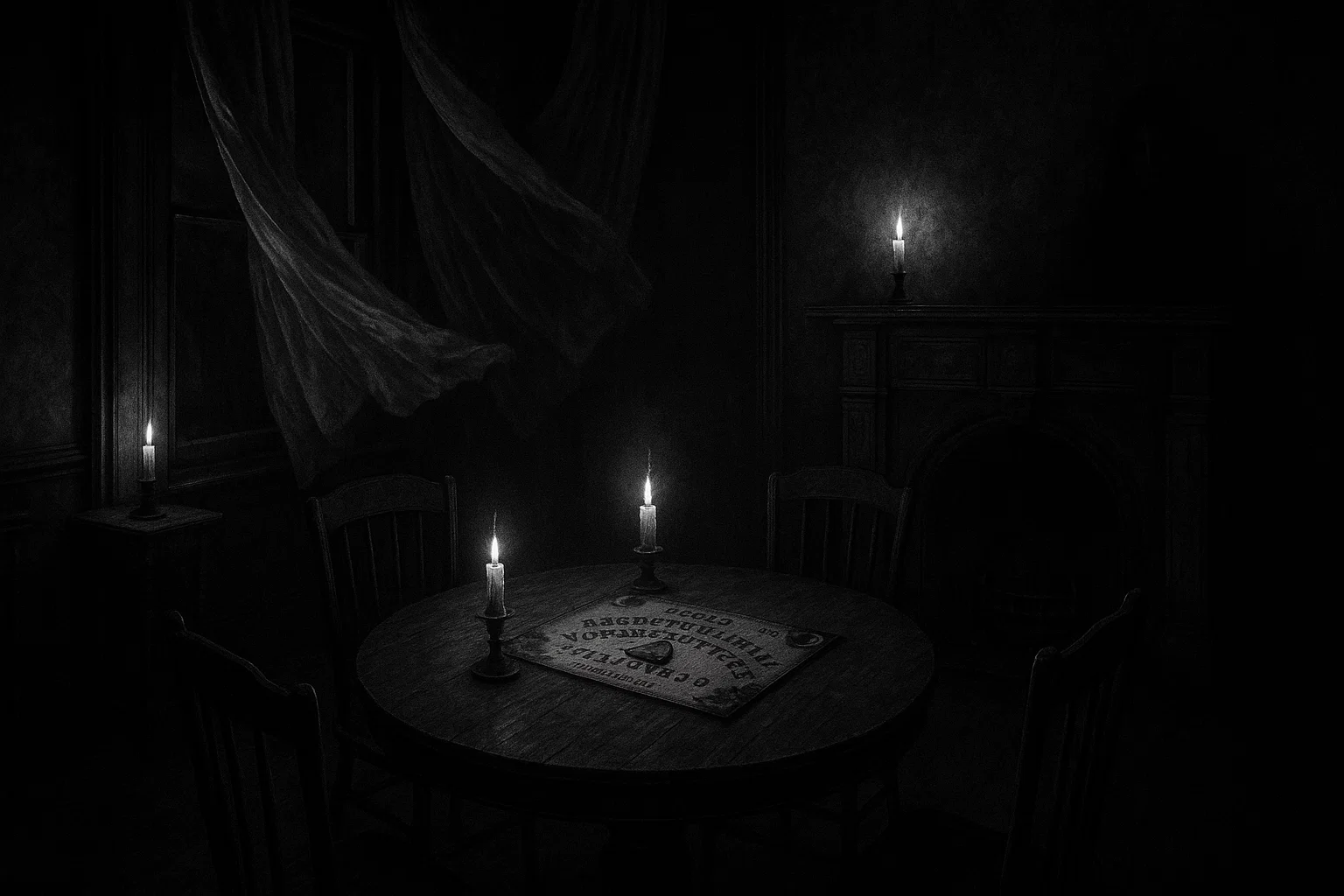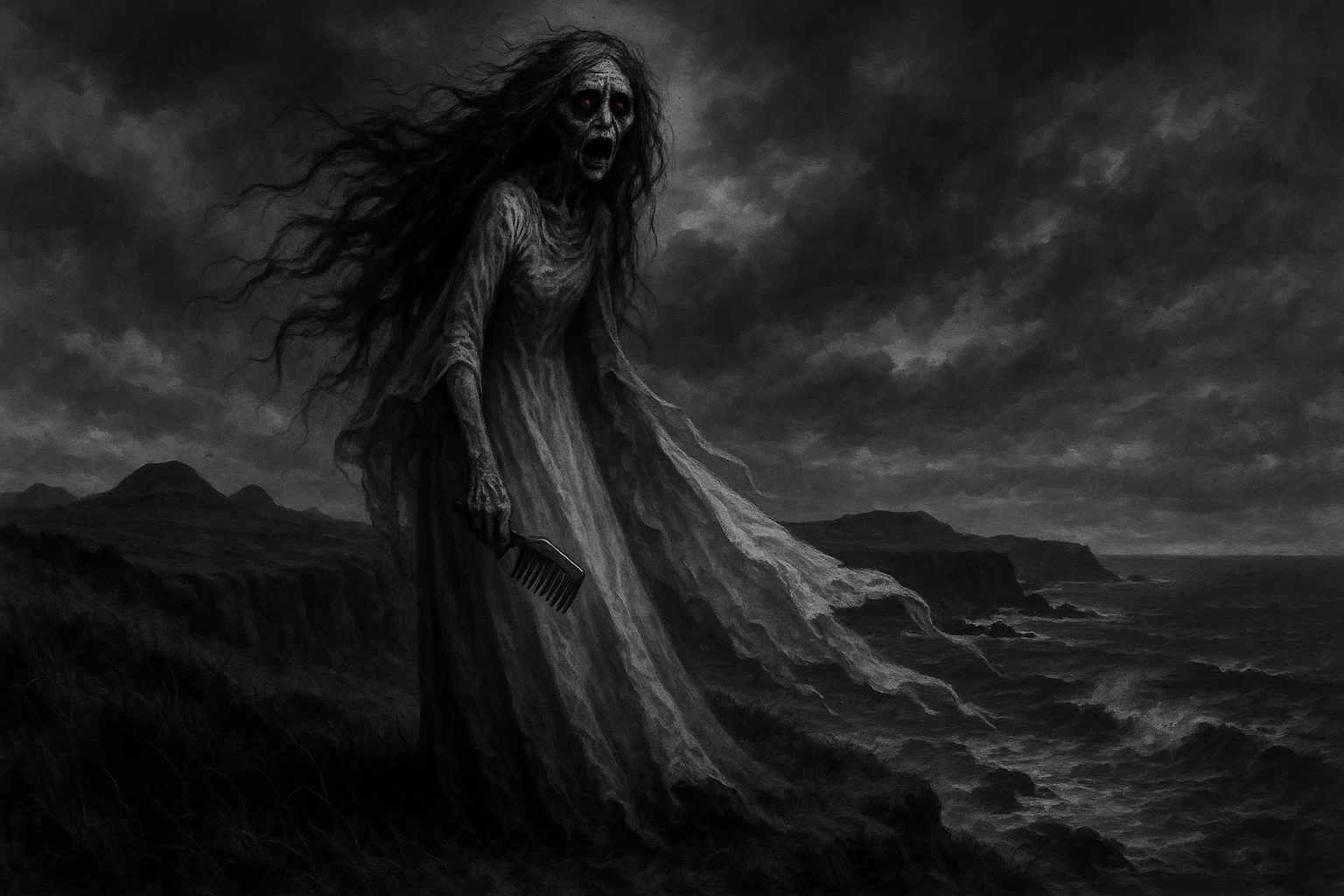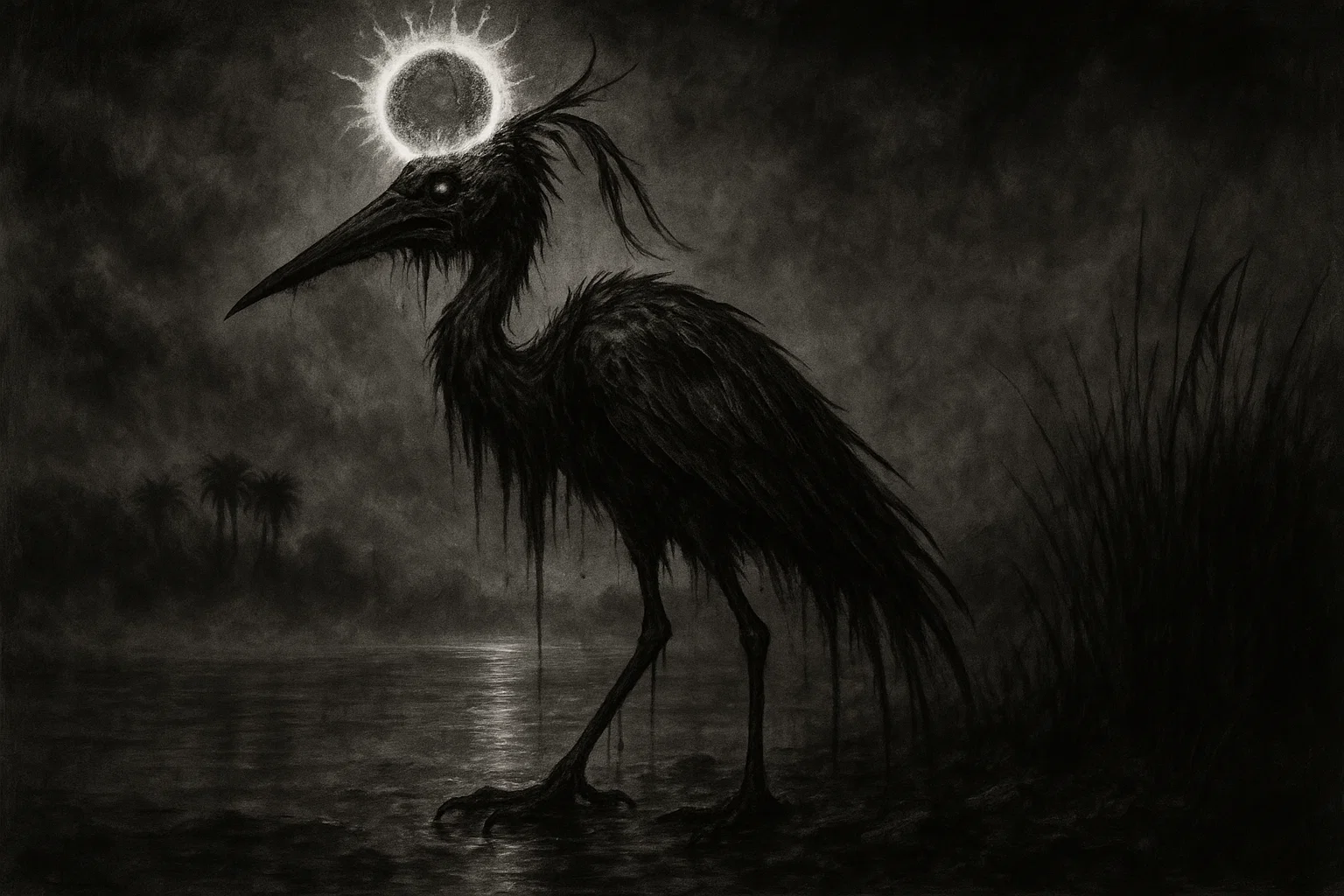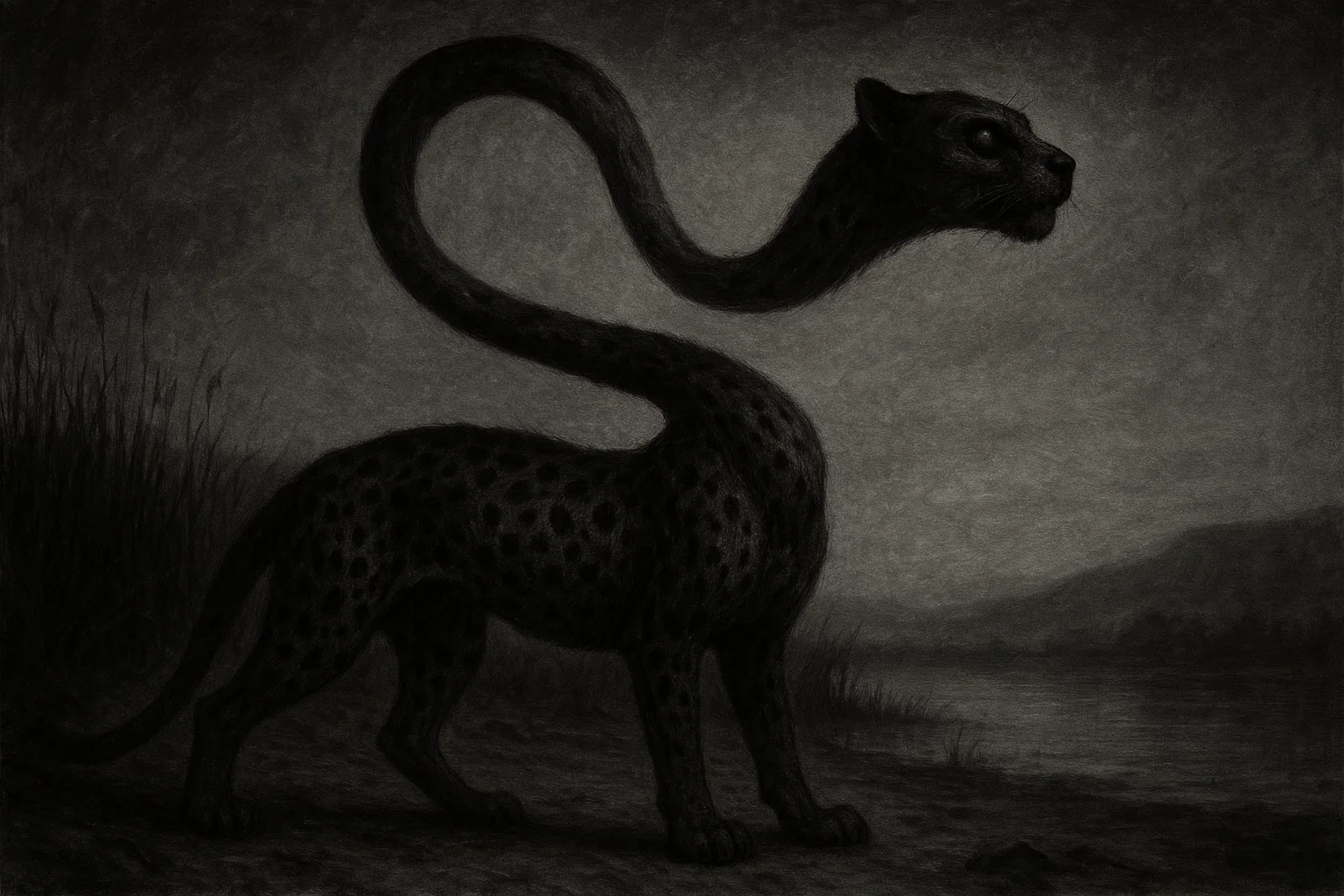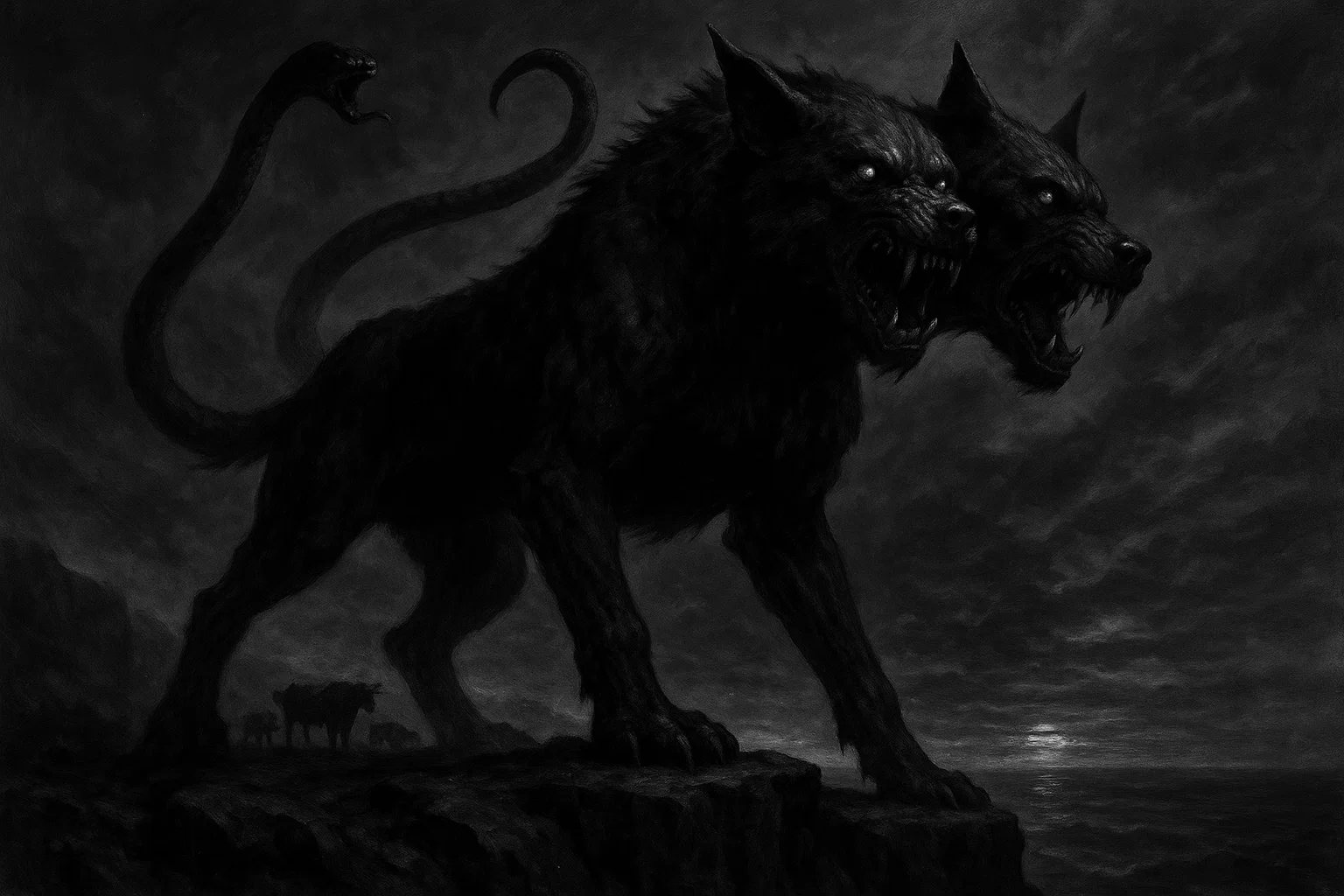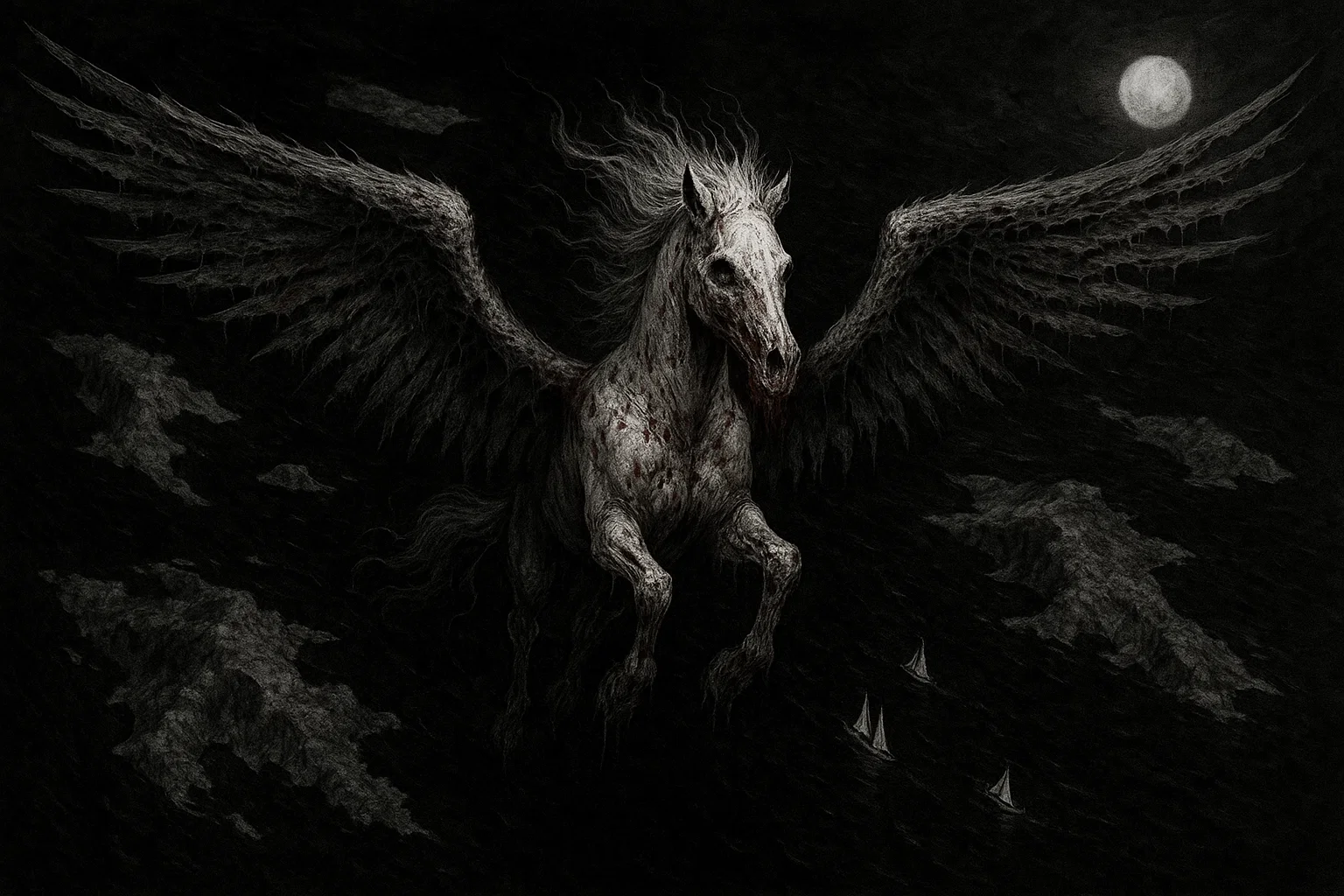The Winchester Mystery House is, perhaps, one of the most famous haunted houses in the United States. The massive Victorian mansion in San Jose, California, is renowned for its labyrinthine architecture and persistent tales of hauntings.
The infamous Winchester House was built under the direction of Sarah Winchester, widow of the heir to the Winchester Repeating Arms fortune. The estate features over 160 rooms, staircases leading to high ceilings, doors opening to sheer drops, and secret passageways—all built continuously from 1886 until Sarah’s death in 1922.
Legends suggest that Sarah designed the home to confuse vengeful spirits. Yet, modern accounts from visitors and staff report unexplained phenomena, including cold spots, strange footsteps, and shadowy figures.
Summary
Key Takeaways
| Attribute | Details |
|---|---|
| Name | Winchester Mystery House (originally Llanada Villa) |
| Location | 525 S. Winchester Blvd., San Jose, California, United States |
| History | Tragic events include the death of daughter Annie in 1866 from marasmus; husband William Wirt Winchester’s passing in 1881 from tuberculosis; father-in-law Oliver Winchester’s death in 1880; and the 1906 San Francisco earthquake that trapped Sarah overnight and damaged the estate. |
| Type of haunting | Intelligent; Apparitions; Ghosts (General); Poltergeist; Shadow People |
| Entities | Sarah Winchester; former construction workers (e.g., “Clyde” the wheelbarrow ghost); shadowy figures possibly linked to rifle victims; staff apparitions |
| Manifestations | Disembodied footsteps; cold spots; doors slamming shut; cabinet doors opening inexplicably; mysterious voices and whispers; shadowy figures; objects moving; doorknobs turning; windows shattering; banging noises; apparitions of workers; sighs and gliding forms |
| First reported sighting | Early 1900s, during Sarah’s lifetime (unverified whispers and presences); post-1923 public opening for staff and visitor encounters |
| Recent activity | Ongoing as of 2024: Executive Director Walter Magnuson reported windows slamming during meetings, doors opening autonomously, and voices in empty rooms; visitor sightings of shadowy figures in 2023 tours |
| Open to the public? | Yes; guided mansion tours, garden walks, and evening “Unhinged” paranormal experiences available daily via official website reservations |
What Is the Winchester Mystery House Haunting?
The haunting of the Winchester Mystery House revolves around claims of restless spirits inhabiting its convoluted corridors and chambers.
Sarah Winchester, driven by profound grief over family losses, allegedly built the mansion to accommodate—or evade—ghosts of those slain by her family’s rifles. That could explain the bizarre features, like dead-end stairs and mirrored ceilings.
Regarding the alleged hauntings, most reports appear to describe intelligent interactions (where apparitions respond to presence), alongside poltergeist-like disruptions (cabinets creak open, footsteps in vacant halls, or cold drafts sweep through sealed rooms).
According to the legends, the Winchester House has always been a strange place. However, the alleged paranormal manifestations intensified after Sarah’s 1922 death, when public tours began in 1923.
Visitors and employees alike recount shadowy figures gliding past windows, disembodied sighs in the Daisy Bedroom—where the 1906 earthquake confined Sarah—and wheelbarrow-pushing laborers from the construction era appearing in the basement.
You May Also Like: The Complete List of All Haunted Places in Alabama
Winchester Mystery House Haunted History
The Winchester Mystery House is an architectural enigma born from tragedy and an obsessive quest to placate restless spirits.
Sarah Lockwood Pardee, born in New Haven, Connecticut, in 1839, married William Wirt Winchester in 1862, binding her fate to the Winchester Repeating Arms Company, makers of the famed “Gun that Won the West.”
However, they faced the first tragedy with the death of their daughter, Annie Pardee Winchester, in December 1866 from marasmus (a wasting illness that left the infant emaciated at six months).
Devastated, Sarah withdrew into silence, her grief compounded when tuberculosis claimed William in March 1881 at age 43. The prior year, Oliver Winchester, William’s father and company patriarch, died in December 1880, leaving Sarah heir to a $20.5 million fortune (roughly $600 million in 2025) and 50% of the company (about $1,000 daily).
Haunted by loss, Sarah turned to spiritualism, a widely practiced phenomenon in the 19th century.
Legend claims that a Boston medium—possibly Adam Coons—advised Sarah Winchester in 1884 that the spirits of those killed by her husband’s rifles demanded atonement. The medium reportedly instructed: “Build a house for them, never stop, or you’ll join your family in death.”
In 1885, Sarah relocated to California’s Santa Clara Valley, purchasing an eight-room farmhouse on 45 acres for $5,000.
Construction began in 1886, employing up to 22 carpenters working ceaselessly—day, night, holidays—under Sarah’s direct oversight.
Sarah’s designs, however, were twisted and without any logic, driven by her belief that constant construction would trap or confuse vengeful spirits. Interestingly, beyond the madness of her plans, Sarah also incorporated some impressive innovations (including indoor plumbing, gas lighting, and wool insulation, rare for the era).
Over time, the mansion expanded to 24,000 square feet, comprising 160 rooms, 10,000 windows, 2,000 doors, 47 staircases, 47 fireplaces, 17 chimneys, 6 kitchens, and 3 elevators. Eccentric features—staircases rising 44 steps to gain 10 feet, doors opening to sheer drops, mirrored ceilings—reflected her intent to disorient spectral pursuers.
Spiderweb motifs (possibly tied to her Masonic affiliations or fascination with arachnids) adorned the windows. The number 13 recurred in spindles, chandeliers, and drains, hinting at occult symbolism.
Sarah’s nightly séances in the Blue Room (now known as the Séance Room), as documented by staff accounts after 1922, involved communing with spirits to guide construction. She reportedly used an old Ouija board to communicate with multiple entities—possibly Annie or William—asking for guidance. She believed their approval would ward off malevolent forces.
The Great San Francisco Earthquake of April 18, 1906 (a 7.9-magnitude tremor at 5:12 a.m.), collapsed seven stories of the mansion’s tower, trapping Sarah in the Daisy Bedroom for 10 hours amid fallen chimneys.
She escaped unharmed but, shaken, ordered the front 30 rooms sealed and the tower demolished, fearing seismic wrath as spiritual rebuke. At least three carpenters perished in the collapse.
The damage from the earthquake was soon followed by even more destruction from fires caused by strange incidents (gas lamp explosions and construction accidents). In the years 1898 and 1907, parts of the estate were scorched.
A major fire in 1901, which started in the ballroom due to faulty wiring, left behind charred beams that later became linked to a ghostly figure known as “Clyde,” believed to be a worker from the past.
Strange accidents were common at the estate: in 1893, a carpenter fell from a scaffold and tragically broke his neck, and in 1910, another worker was crushed by a falling beam in the basement.
With more and more strange accidents happening around her, Sarah Winchester became increasingly withdrawn. She often dined alone, watched from hidden balconies, and her frail figure—troubled by rheumatism—was usually covered in black veils.
Servants also spoke of her unusual nightly rituals. For example, at midnight, she would ring the bells to signal the start of her séances. She would light the candles in the Blue Room, dress in lace, and try to communicate with unseen spirits.
In 1911, one maid claimed she fled in fear after a door that should not have existed slammed shut and caught her skirt, saying that a “cold hand” pulled her free. Another servant in 1915 insisted a hammer floated in mid-air, nailing itself into place without anyone holding it, near the Grand Ballroom.
These strange occurrences, documented in local newspapers, strengthened the belief that Sarah’s séances were attracting both friendly and unfriendly spirits—those tied to her endless construction work or victims seeking justice.
In 1903, a carriage accident on Winchester Boulevard killed a driver when his horses were startled by “shadows” near the estate, leading some locals to believe something supernatural was at play.
As Sarah’s health worsened over the years, arthritis kept her on the lower floors. Yet, she continued to oversee construction until her death from heart failure on September 5, 1922, at the age of 83. In line with her odd wishes, she passed away in a sleeping bag on her kitchen floor.
After her death, the estate was valued at $30 million, with the unfinished mansion alone worth $5 million. And, after years of uninterrupted labor, the construction finally stopped.
Once opened to the public in 1923, the house revealed more secrets. In the Séance Room, a locked safe contained only the baby shoes of her daughter, Annie. A door that had been sealed since 1906 was finally opened in 2016, revealing earthquake-damaged artifacts that had been hidden inside.
During the tours, visitors discovered even more oddities (such as a wine cellar that had collapsed in 1906, leaving tools buried in ash as if they had been abandoned in the middle of work).
You May Also Like: 15 True Ghost Stories You Shouldn’t Read Alone After Midnight
Winchester Mystery House Ghost Sightings
| Date | Location in House | Witness(es) | Description |
|---|---|---|---|
| Early 1900s (unverified) | Séance Room (now Gardener’s Quarters) | Sarah Winchester (alleged) | Whispers and presences during nightly rituals; cold spots and shadowy outlines advising on builds. |
| 1924 | Various rooms, including roof | Harry Houdini | Footsteps pursued him; searched empty roof to no avail; dubbed it “Mystery House.” |
| 1983 | Staff quarters and hallways | Night watch couple (Ernie and Debbie) | Eerie presences; objects shifting; disembodied voices calling names in empty nights. |
| 2007 | Ballroom and basement | Most Haunted Live! crew | Wheelbarrow ghost (“Clyde”) seen pushing load; banging doors; voices captured. |
| 2011 | Third-floor ballroom | Ghost Adventures team (Zak Bagans et al.) | Shadow figures; temperature drops to 32°F; Zak scratched; intelligent responses via spirit box. |
| 2014 | Séance Room and gardens | Zak Bagans & Ghost Hunters | Apparition of Sarah; footsteps; doors slamming; psychic medium James van Praagh channeled her. |
| 2016 | Daisy Bedroom hallway | Tour guide Samantha | Loud sigh from empty hall during tour; small ghostly form glided around corner; no stragglers. |
| 2023 | Second-floor windows | Anonymous visitor | Figure in window during photo; no one present; slow day confirmed empty. |
| 2024 | Meeting rooms and adjacent halls | Executive Director Walter Magnuson | Windows slammed like “exclamation points”; doors opened autonomously; voices in empty rooms. |
Harry Houdini (1924)
In October 1924, famous magician and skeptic Harry Houdini visited the newly opened tourist attraction, the Winchester Mystery House, shortly after the death of its owner, Sarah Winchester.
Accompanied by a reporter, Houdini, known for debunking spiritualists, was curious but also cautious as he explored the dark, winding hallways of the house.
As he walked, he suddenly heard footsteps behind him, which seemed to follow him closely. Startled, he hurried upstairs, feeling the presence of something or someone pursuing him—he could hear creaking stairs and thudding sounds right behind him.
Eventually, he reached the roof, where the stars twinkled above. He turned around, expecting to see his pursuer, but there was no one there. Catching his breath, he joked to his companion, “That was no trick of the wind!”
Even though Houdini never spoke about this strange encounter in public—likely to avoid fueling ghost stories—he did suggest that the estate be called the Winchester Mystery House, adding to its mysterious reputation.
Staff at the house later whispered about a “chaser spirit,” possibly a diligent carpenter who continued to work in the house.
The “Night Watch Couple” (1983)
Ernie and Debbie (known as the “night watch couple”) worked at the Winchester Mystery House from 1974 to 1983. They lived in the staff quarters, surrounded by the eerie silence of the mansion at night. While they had regular jobs during the day, their nighttime work became increasingly unsettling over the years.
By 1983, both began to feel uneasy about the strange happenings around them.
Their story was featured on ABC7 News, revealing bizarre occurrences that left them on edge. They reported hearing voices calling their names—“Ernie… Debbie…”—coming from empty kitchens in the early hours.
They discovered drawers opening on their own in the blue room, spilling out linens without explanation. One chilling night, they felt an unusual cold in their bedroom, and Debbie woke up with faint scratches on her arm, as if something invisible had clawed at her. Surprisingly, the red marks were gone by morning.
Ernie shared a particularly creepy experience from the basement. He heard heavy footsteps coming from the wine cellar, where debris from the 1906 earthquake lay hidden.
He claimed to see a ghostly wheelbarrow moving by itself, making noises as if it were filled with something, even though it was empty. They named this entity “Clyde,” a nod to lore passed down by former workers.
On humid nights, doors would slam shut on their own, and locks would turn as if by an unseen hand. Once, a chandelier swung wildly even when there was no breeze, the crystals tinkling like they were laughing.
In an attempt to ward off any spirits, the couple sprinkled salt lines, recalling rituals supposedly performed by Sarah Winchester. Despite these efforts, the strange happenings continued, following them from room to room.
In 1983, they decided to leave their job and spoke with a reporter named Steve Davis, expressing their feeling that the house was “alive” and watching them.
You May Also Like: Gwodz Road Haunting: Alabama’s Most Terrifying Ghost Story
Ghost Adventures Investigation (2011)
In October 2011, the popular show Ghost Adventures brought the Winchester Mystery House into the spotlight. The host, Zak Bagans, and his team spent 24 hours investigating the mansion, with a particular focus on the third-floor ballroom.
During their time there, they captured strange sounds on their equipment, including eerie messages suggesting they should “leave” and requests to “build more.”
Even though it was July, the temperature dropped to a chilling 32°F, causing their breath to fog up the cameras. While reciting a prayer Sarah Winchester had used in her séances, Zak allegedly felt something icy touch his back, leaving three scratch marks that bled, all of which were caught on camera as a mysterious swirling light appeared.
The team noticed shadowy figures moving around them. One looked like a gentleman in a top hat, possibly William Winchester, who disappeared into a false fireplace. They even heard a creepy sound of a wheelbarrow scraping across the basement floor with no one around.
At one point, Aaron Goodwin found himself alone in a bedroom when he heard a child’s giggle, possibly from a girl named Annie, and felt someone tugging on his sleeve. Nick Groff, using a special camera, captured what appeared to be a ghostly figure moving up the stairs, which shouldn’t have been possible.
As they pressed on, the team heard a series of loud banging noises, and a door that seemed to lead nowhere suddenly creaked open as if someone was trying to get in.
The episode attracted over 2 million viewers, and the strange sounds they recorded were considered significant by many.
Daisy Bedroom Sigh (2016)
During a 2016 tour, guide Samantha gathered guests around to unveil a long-hidden door to a 13th bedroom that had been sealed since the 1906 earthquake.
She led them into the nearby Daisy Bedroom. As sunlight filtered through lace curtains, Samantha started sharing stories about the earthquake—such as how chimneys collapsed and how Sarah Winchester, the home’s owner, was trapped for ten hours.
Suddenly, a deep, tired sigh came from the hallway. It sounded almost like a breath of relief after being trapped. Guests turned their heads, and whispers spread through the group. “It’s just someone lagging behind,” Samantha reassured them as she stepped into the hallway, finding it empty with only dust floating in the sunlight.
She returned to continue her story, but then she caught a glimpse of something unusual: a small, ghostly figure dressed like a Victorian child quietly moving around the corner and fading into the wall. Gasps filled the room; one guest felt a chill and clutched her throat, while another took a photo that later showed a strange orb among the flowers.
Interestingly, there were no children present on that tour, and the sigh seemed to echo the pleas that Sarah Winchester was said to have made during the earthquake, which she wrote about in her diaries.
Samantha, who had led many tours before, later told the Mercury News, “It felt… welcoming? But at the same time, wrong.”
The room had a unique design, with stairs that twisted and turned to help spirits find their way, adding to the irony—was a ghost trying to escape from other ghosts?
Some attributed the sound to nearby air vents. However, those who believed linked it to the spirit of Annie, who is said to be trapped in a state of perpetual youth. Now, on tours, guides often pause in that spot and ask, “Did you hear that?” Most of the time, silence answers… but not always.
You May Also Like: Is the Richards DAR House Haunting Evidence of Intelligent Spirits?
Theories
Psychological Phenomena and Confirmation Bias
Human perception often tends to favor the expected, a lens through which the Winchester Mystery House amplifies ordinary oddities into otherworldly events.
Pareidolia—seeing faces in shadows or hearing voices in wind—thrives in its disorienting layout: tight turns and mirrored halls trick the eye, birthing apparitions from staff reflections or cloud wisps. Confirmation bias can also reinforce this.
Familiar with the legends and the ghost stories, most visitors are more likely to interpret creaks—perhaps settling of redwood beams—as footsteps, and cold spots from the 1906 quake-insulated voids as spectral chills.
Psychologist Robert Gordon, commenting on similar cases, noted individuals project familial tensions onto “demonology,” mirroring Sarah’s grief-fueled builds.
Architectural and Environmental Factors
The Winchester Mystery House is full of surprises, thanks to its strange layout and unexpected designs. The house was built without a clear plan, resulting in unusual features that can easily be mistaken for spooky occurrences.
For instance, the numerous long hallways and false doors created after an earthquake can cause wind to rush through, resulting in eerie sounds and sudden drafts. The uneven floors, a result of the 1906 earthquake, produce creaky noises that can sound like footsteps.
Historian Janan Boehme notes that the house features 47 fireplaces, many of which were added during the construction process. These fireplaces can trap warm air, creating chilly spots that feel like a ghostly presence. With about 10,000 windows, the wind can shake them, sometimes breaking the glass, as noted by Director Magnuson in 2024.
The acoustics in the house contribute to the spooky atmosphere. Large ballrooms can amplify sounds, which might be interpreted as voices, and the damp basements can emit musty smells that some might associate with “bad spirits.”
A 2018 study by Colin Dickey found that 80% of the strange occurrences in the house could be attributed to changes in temperature, particularly due to the use of redwood insulation in the building.
Residual Hauntings from the Construction Era
The Residual Energy Theory suggests that the Winchester Mystery House captures the emotional experiences of the workers who spent 36 years building it. Sarah Winchester had crews working around the clock, and their hardships and exhaustion seem to be etched into the very walls of the house, creating echoes of their work that linger in the air.
The devastating 1906 earthquake, which sadly resulted in the loss of many lives, intensified these feelings.
The idea that buildings retain memories is supported by parapsychologist William Roll’s concept of “place memory,” where certain emotional experiences leave behind lasting traces.
You May Also Like: Likho: The One-Eyed Crone Who Brings Death and Bad Luck
Intelligent Spirits of Rifle Victims
At the heart of this story is a legend surrounding the Winchester Mystery House and the ghosts said to haunt it.
The theory suggests that the spirits of those who died from the Winchester rifle—like soldiers from the Civil War, Native Americans defending their land, and various outlaws—are trapped in the mansion. They are thought to be drawn back by Sarah Winchester, the mansion’s builder, who felt guilty about her connection to the rifles that caused so much suffering.
According to the tale, a medium named Adam Coons (though this person may be more mythical than real) warned Sarah that she would incur the anger of these spirits if she did not continue building the house.
This theory could also explain why people have reported seeing mysterious figures in the house, dressed in old-fashioned attire. Investigations in more recent years even caught haunting sounds on recordings, with voices pleading for “revenge.”
By 1881, over half a million rifles had been shipped out, and these weapons were involved in many tragic events. The spirits, according to connections to a mystical belief system involving Rosicrucians (often associated with intricate designs, such as spider webs), are believed to be seeking forgiveness for their past suffering.
A notable medium, James Van Praagh, claimed to have communicated with these spirits in 2014, who reportedly wondered, “Why us?” Additionally, some people have experienced strange physical marks on their bodies, such as scratches and bruises, which are believed to be caused by angry spirits.
Winchester Mystery House vs Other Haunted Locations
| Haunted Location | State/Country | Key Features | Primary Entities/Manifestations | Public Access |
|---|---|---|---|---|
| Lizzie Borden House | Massachusetts, USA | Axe murder site turned B&B; tight stairs, period rooms. | Lizzie’s apparition; hatchet sounds; bed vibrations. | Yes; overnight stays, tours. |
| Stanley Hotel | Colorado, USA | Inspired The Shining; 140 rooms, concert hall. | Room 217 ghosts; piano playing; child laughter. | Yes; tours, ghost hunts. |
| Eastern State Penitentiary | Pennsylvania, USA | Abandoned prison; solitary cells, catwalk views. | Shadow people; disembodied screams; cell slams. | Yes; audio tours, Halloween events. |
| Waverly Hills Sanatorium | Kentucky, USA | TB hospital; death tunnel, rooftop solarium. | Nurse apparitions; body chute orbs; wheelchairs rolling. | Yes; guided investigations. |
| Myrtles Plantation | Louisiana, USA | Antebellum home; mirror hall, slave quarters. | Chloe ghost; handprints on windows; rocking chairs. | Yes; B&B, mystery dinners. |
| Bell Witch Cave | Tennessee, USA | Cabin site of 1817 poltergeist; underground cave. | Kate witch entity; animal mutilations; voice mimicry. | Yes; cave tours, reenactments. |
| LaLaurie Mansion | Louisiana, USA | 1830s torture chamber; French Quarter rowhouse. | Tortured slaves’ screams; chained apparitions; bloodstains. | No; private residence, exterior views. |
| Tower of London | England | Medieval fortress; crown jewels vault, execution block. | Anne Boleyn ghost; headless figures; raven omens. | Yes; daily tours, yeoman guides. |
| Bodie Ghost Town | California, USA | Abandoned Gold Rush town; saloons, mines. | Residual miner apparitions; floating lights; whispers. | Yes; state park self-guided. |
| Gettysburg Battlefield | Pennsylvania, USA | Civil War site; 1,000 acres, monuments. | Soldier drums; phantom cannons; lost limb searches. | Yes; ranger programs, reenactments. |
| Poveglia Island | Italy | Plague quarantine; bell tower asylum. | Plague doctor shadows; surgical screams; ash apparitions. | No; restricted access. |
| Port Arthur Historic Site | Tasmania, Australia | Penal colony; model prison, church ruins. | Convict chains rattling; guard figures; dog howls. | Yes; lantern ghost tours. |
| Aokigahara Forest | Japan | Suicide woods at Fuji base; dense trees, caves. | Yūrei spirits; compass failures; hanging apparitions. | Yes; guided hikes, signage. |
| Hoia Baciu Forest | Romania | “Bermuda Triangle” woods; twisted trees, clearing. | Poltergeist swarms; UFO lights; time-loss wanderers. | Yes; self-explore, tours. |
| Edinburgh Vaults | Scotland | Underground chambers; 18th-century slums. | Niddry Street poltergeists; touches; child cries. | Yes; midnight ghost hunts. |
You May Also Like: 10 Short Horror Stories You Should Never Read Alone
Is Winchester Mystery House Haunting Real?
The Winchester Mystery House stands as a symbol of one woman’s struggle against sorrow, its walls filled with stories of creativity born from solitude.
Over the decades, tales of strange happenings—ranging from ghost sightings to unusual sounds—have created an intriguing picture of the mysterious. However, many believe that these eerie experiences can often be explained by the quirks of the house itself, where history feels heavy and can bend our perception of reality.
While there may not be solid proof of hauntings, the estate prompts us to think: if it’s not spirits at play, then what drives the constant construction in a life that has its limits?

